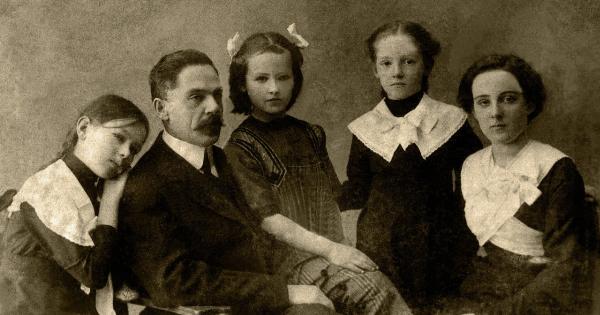Child asthma, also known as pediatric asthma, is a chronic respiratory condition that affects millions of children worldwide.
It is a long-term inflammatory disorder of the airways, characterized by recurrent episodes of wheezing, coughing, chest tightness, and shortness of breath. Understanding the causes, symptoms, diagnosis, and management of child asthma is crucial for parents, caregivers, and healthcare professionals.
Causes of Child Asthma
The exact cause of child asthma is unknown, but several factors contribute to its development. These include:.
- Genetic predisposition: Children with a family history of asthma or allergies are more likely to develop asthma themselves.
- Environmental factors: Exposure to tobacco smoke, air pollution, allergens (such as dust mites, pollen, pet dander), and certain respiratory infections during early childhood can increase the risk of developing asthma.
- Respiratory infections: Viral infections, especially respiratory syncytial virus (RSV), can trigger the development of asthma in susceptible children.
- Low birth weight: Premature birth or low birth weight may increase the likelihood of developing asthma.
Symptoms of Child Asthma
The symptoms of child asthma can vary from mild to severe and may include:.
- Recurrent episodes of wheezing (a whistling sound during breathing).
- Coughing, particularly during the night or early morning.
- Chest tightness or discomfort.
- Shortness of breath or rapid breathing.
- Frequent respiratory infections.
- Difficulty in performing physical activities.
Diagnosing Child Asthma
Diagnosing child asthma involves a combination of medical history evaluation, physical examination, and diagnostic tests. These may include:.
- Medical history: The healthcare provider will ask about symptoms, family history of asthma or allergies, and exposure to potential triggers.
- Physical examination: The child’s lungs will be examined using a stethoscope to listen for wheezing or other abnormal breath sounds.
- Pulmonary function tests (PFTs): These tests measure lung function and can help determine the severity of asthma. The most common PFT for children is spirometry, which measures how much air the child can breathe in and out and how fast they can exhale.
- Allergy testing: Skin or blood tests may be performed to identify specific allergens that could be triggering the child’s asthma symptoms.
- Peak flow monitoring: This at-home test measures how well the child’s lungs are functioning and can help track changes in asthma control.
Treatment and Management of Child Asthma
The primary goals of treating and managing child asthma are:.
- Preventing chronic symptoms and controlling asthma attacks.
- Maintaining normal lung function and minimizing limitations on physical activity.
- Reducing the need for emergency visits and hospitalizations.
- Preventing side effects from medications.
Treatment options for child asthma may include:.
- Controller medications: These medications are taken daily to reduce airway inflammation and prevent asthma symptoms. They include inhaled corticosteroids, leukotriene modifiers, long-acting beta-agonists, and immunomodulators.
- Rescue medications: These quick-relief medications, such as short-acting beta-agonists, provide immediate relief during asthma attacks or exacerbations.
- Allergy medications: If allergies trigger the child’s asthma symptoms, allergy medications, such as antihistamines or nasal sprays, may be prescribed.
- Asthma action plan: A comprehensive plan developed with the child’s healthcare provider to guide asthma management, including instructions on medication use, symptom monitoring, and emergency response.
- Avoiding triggers: Identifying and avoiding triggers, such as tobacco smoke, allergens, and pollution, is an essential step in managing child asthma.
Lifestyle Modifications to Manage Child Asthma
Aside from medical treatment, certain lifestyle modifications can help manage child asthma effectively:.
- Creating an asthma-friendly home environment by reducing exposure to allergens and irritants.
- Encouraging regular physical activity as long as it does not trigger asthma symptoms. Exercise can help improve lung function and overall health.
- Promoting a healthy diet rich in fruits, vegetables, and whole grains to support optimal lung function.
- Teaching the child and family members proper asthma self-management techniques, such as correct inhaler use and recognizing early signs of worsening symptoms.
- Ensuring regular follow-ups with the child’s healthcare provider to monitor asthma control and adjust treatment plans if necessary.
Complications of Child Asthma
When not properly managed, child asthma can lead to various complications, including:.
- Severe asthma attacks that require emergency medical intervention.
- Decreased lung function, which may persist into adulthood.
- Frequent school absences and limitations on physical activities.
- Psychological impact, such as anxiety or depression, due to chronic symptoms and limitations.
- Side effects from long-term medication use, particularly oral corticosteroids.
Prevention of Child Asthma
While it may not be possible to prevent all cases of child asthma, certain measures can help reduce the risk or severity of the condition:.
- Avoid exposing the child to tobacco smoke before and after birth.
- Promote breastfeeding, as it helps boost the child’s immune system.
- Minimize exposure to potential environmental triggers, such as dust mites, pollen, and pet dander.
- Practice good hygiene to reduce the risk of respiratory infections.
- Consider early allergen exposure prevention strategies, such as exclusive breastfeeding and delayed introduction of solid foods, under the guidance of a healthcare provider.
Conclusion
Child asthma is a chronic respiratory condition that requires ongoing management and care.
By understanding the causes, symptoms, diagnosis, and treatment options, parents and caregivers can effectively support their child’s asthma control and overall well-being. Regular communication with healthcare professionals and adherence to an asthma action plan are fundamental in providing children with the best possible quality of life despite their condition.



























